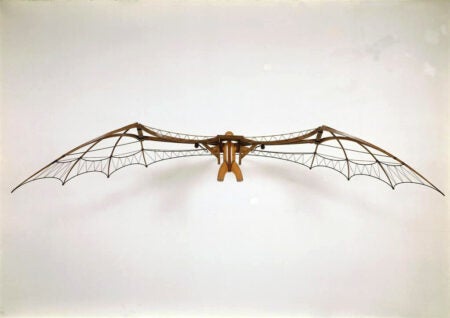We are introducing a new resource featuring more than 75 images on the topic of biomimicry. Find it in the Artstor Digital Library’s Teaching Resources area: Teaching Resources > Case Studies > STEM to STEAM > Stem to Steam: The Anatomy of Design

Throughout history we have looked to nature to define and devise systems of design. Leonardo’s Vitruvian Man embodies the dominance of the concept of anthropomorphic balance during the Renaissance. The perfect proportions of man are contained within the ideal geometric shapes of the square and the circle, as if the artist had given graphic proof to the metaphysical declaration of the Greek philosopher Protagoras: man is the measure of all things. Consider our units of measurement, such as the foot and the cubit (from the Latin for forearm) established by the ancients, the braccio (Italian for arm), the pouce (French for thumb, meaning inch), whereby mathematical ratios in architecture were based on the proportions of the human figure.

Using artistic and scientific explorations of the body as a point of departure, this selection extrapolates from the static to the dynamic, exploring the principle of biomimicry – the design of materials, structures, and systems predicated on biological models. A bird’s wing is the prototype for Leonardo’s flying machine, morphing to an airplane; a shark’s fins are likened to the tower of a submarine, and a flipper; human joints are juxtaposed to mechanical ones, and the double helix of the DNA structure is spun into architectural and artistic expressions. (Further, by including artworks that are more interpretive than scientific, the selection introduces considerations of aesthetics and artistic license.)

The comparisons drawn here follow on the examples of one of the pioneers of biomimicry, the Scottish mathematical biologist D’Arcy Thompson (1860-1948). Thompson correlated biological forms and mechanical structures, as when he equated the backbone of a quadruped to the girder of a bridge.
While biomimicry has many complex scientific, structural, and even aesthetic applications, it is rooted in the basic premise that nature is our teacher. In the words of the poet and thinker Ralph Waldo Emerson (1803-1882): “When nature has work to be done, she creates a genius to do it.”
—
For the teaching perspective, see: Grant E. Gardner. “Using Biomimicry to Engage Students in a Design-Based Learning Activity.” The American Biology Teacher 74, no. 3 (2012): 182-84. Available from JSTOR and BioOne
For an introduction to Biomimicry, see: Riechert, Susan E., and Post Brian K. “From Skeletons to Bridges & Other STEM Enrichment Exercises for High School Biology.” The American Biology Teacher 72, no. 1 (2010): 20-22. Available from JSTOR and BioOne
And take a look at our curated image group: History of Medicine and Natural Science, featuring 100 images on the subject.
— Nancy Minty, collections editor
You may also be interested in:
- Enhancing visual acuity in medical education through the arts
- How art can enhance scientific and mathematical thinking
- An Artstor Bestiary
- Patent medicines and advertising cards from the Oskar Diethelm Library


